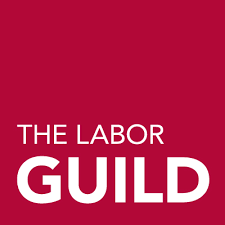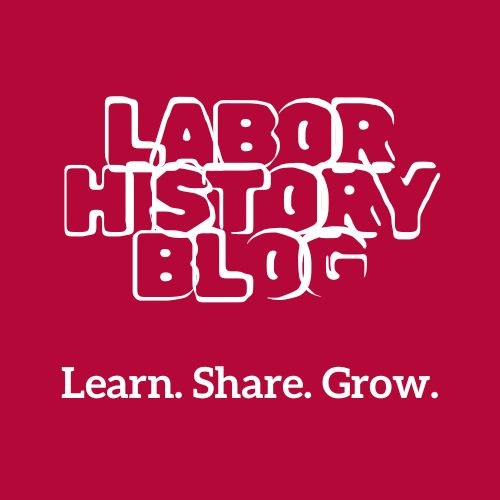February 2024 Labor History Blog
by David Kowalski, Former Executive Director of The Labor Guild
I have found investigating the battles of our labor history very intriguing. However, our history is influenced by the confluences around us such as economic booms and busts that are inherent to a Capitalist system, the laws made to promote the industrialists and keeping workers depressed. And, of course, the Courts, who for the most part supported the industrialists, even when we had a friendly Congress that passed laws beneficial to labor. Sound familiar? Yes, this has all happened before. Therefore, I feel that you should understand the founding of Labor Law; its origin and the development as well as our experience with it.
The fact is that Capitalism is reliant on a strong legal system to ensure the system runs smoothly to enforce the rights of ownership. By the 1840’s America had adopted England’s interpretation of “property rights” law. This was the turning point between what our forefathers intended and what developed. “Corporations” never made their way into the Constitution. Intentionally, the forefathers left that matter for the states to control.
It is interesting to see how the law was corrupt in favor of capital from its inception, and the strength of combined capital in dealing with individuals on their employment status yet government was blind to allow labor to do the same. It is interesting to see how these laws had built in them an assumption and interpretation that favored capital. The strength of combined capital in dealing with individuals on their employment status became devastating for unions. The courts allowed capital to organize but not workers.
In 1806 Philadelphian cordwainer (leather worker) George Pullis dared to “conspire to maintain higher wages” by encouraging others in their field to join the society. This criminal conspiracy case was the first court case having to do with labor organizing. The main points of the Commonwealth vs. Pullis trial he was accused of:
- A conspiracy to extract higher wages.
- The organization was deceitfully designed to prevent others from working, except for a higher wage.
- Taking away the right of other workers to negotiate their own rate of pay with their employer or regulate their own pay rate therefore infringing upon the rights of others as well as regulating their trade.
- The employer contended, no man or employer can stand against such a combination of men.
The eight workers named in the case were found guilty of conspiracy. Each were fined $8.00 along with court costs which caused the organization to collapse.
It wasn’t until 1842 that a Massachusetts case held differently for another shoemaker under similar circumstances. In Commonwealth vs. Hunt, Chief Justice Lemuel Shaw found:
- A conspiracy must be a combination of two or more persons doing a concerted action to accomplish a criminal or unlawful purpose.
- A conspiracy may be used to accomplish some other purpose and not necessarily for criminal or unlawful purposes.
- Labor organizations can be used for honorable means as well as devious purposes.
This finding legitimized the right of labor to organize.
Thus, the foundation of Labor Law. Employers sued, a trial by jury was conducted and a verdict delivered. This amounted to a very cumbersome and time-consuming process. Until July 2, 1890, when a new tool came into being, called the Sherman Anti-Trust Act. Designed to control the growth of monopolies, it wasn’t long before it was turned to be used on Labor. The new Act was a “civil injunction” which was cheaper and less time consuming than the alternative. Again, coming from English property rights law. Its premise is to: empower a judge to intervene and force a party (the union) to cease its activity to maintain the status quo, regardless as to whether it is fair or legal. What mattered were the owners and their rights in their dealings with their property and their commerce. It also included the enforcement of the injunction which was used effectively for strikes and on companies which had “Yellow Dog” contracts. That was an employment contract that forbids employees from joining a union. When unions used a strike to organize in a shop or business, they were quickly crushed with an injunction. The first time the Civil Injunction was used was during the Pulman Strike in 1894, which I will talk about in June.
When Labor did find a sympathetic Congress, it did pass a law beneficial to Labor. Henry DeLamar Clayton, a Congressman from Alabama, sponsored and helped pass the Clayton Act, enacted October 15, 1914. The law was designed to clarify and supplement the Sherman Act and to exempt Labor and their disputes from it. The Act in Section 6 exempted labor organization from the Sherman Act, saying that human labor is not an article of commerce nor is it a commodity. In Section 20 it protected boycotts, strikes and picketing as long as they are peaceful, remain exempt. Under this law, injunctions could not be used to settle labor disputes. Perfect, just what we were looking for!
Then, the Supreme Court stepped in and tested the new law, ruling against the Union in Duplex Printing v. Deering. The Clayton Act did not exempt Unions from the Sherman Act. The Union literally stopped supplies to the company, blocking them from trade shows and stopped the shipping of their product; stopped repairs of their equipment and protested the buying of their goods, forcing Duplex to either shut down or unionize. These tactics were similar to the monopolistic practices Sherman prohibited. The court held that Congress exempted only those activities that were permitted at the time the Clayton Act was passed and not before, making the Clayton Act subservient to Sherman. So, yet another tool to use against Labor.
Labor was getting boxed in with no recourse. Labor disputes were getting more violent and mimicked open warfare rather than a picket line. The Coal strike in Matewan, W.V is a good example where coal operators’ hired guns took on a local sheriff that were outgunned in the Massacre of Matewan which I will write about in August. As the strike escalated, coal operators hired pilots and purchased WWI surplus armament and dropped bombs on the striking union miners.
The point here is the Industrialists realized that if they did not let up on workers there was a very real threat of a revolution where they could lose a whole lot more. So in 1932, in the midst of the Great Depression, Congress passed the Norris-LaGuardia Act. In it the government recognized its bias toward capital and confirmed it in the preamble of the act. It admitted that it had aided the right of capital to consolidate itself and because of this left the unions, members and those dependent on it, helpless to exercise their rights to negotiate the terms conditions of their employment free from the coercion of the employer.
Again, due to the conservative Supreme Court, it wasn’t until 1935 that Congress approved The Wagner Act, now known as the National Labor Relations Act. It established the National Labor Relations Board for adjudicating disputes and implementing new law. The Act was biased in favor of the Unions. It was seen that even though Unions were militant, compared to industrial power and “big money”, unions were weak. Thus, the reason that the Section 7 rights guaranteeing labor rights was included in the Act. More importantly, there was no Section 8(b). There was a Section 8(a) outlining the ways employers could not violate labor’s rights. However, there was no such language regarding labor. We could not commit an Unfair Labor Act under the law because there was no such provision to prosecute us under.
Congress and the President knew, where the development of labor and capital bargaining law was so new, it could never even attempt to include all the problems that were sure to come. Therefore, Congress put together a very loose law, a basic skeletal structure. The meat of the law would be the case law verdicts that would come as the law was used and establish the precedence. Labor now had a playing field in which to adjudicate injustice. In some cases it worked and in others it did not. Right after this law was passed guaranteeing strike workers their job back, the conservative Supreme Court ruled against them in NLRB v. McKay Radio.
My point being that much like the Mill Girls of Lawrence winning their strike, over time, the playing field that labor has been playing on, has gotten smaller with corporations high jacking the supreme court. Similarly, look at the 1964 Civil Rights Act. Have minority rights and voting rights become stronger or weaker due to the Courts over time? Like I said, the lessons of history have not been heeded, thus we are destined to repeat them, over and over as we can’t seem to learn from them.
Join Our Mailing List
For Guild news, Labor School updates, Workshops, and CGA information.

